Plant-eating dinosaurs evolved to eat differently
- Published
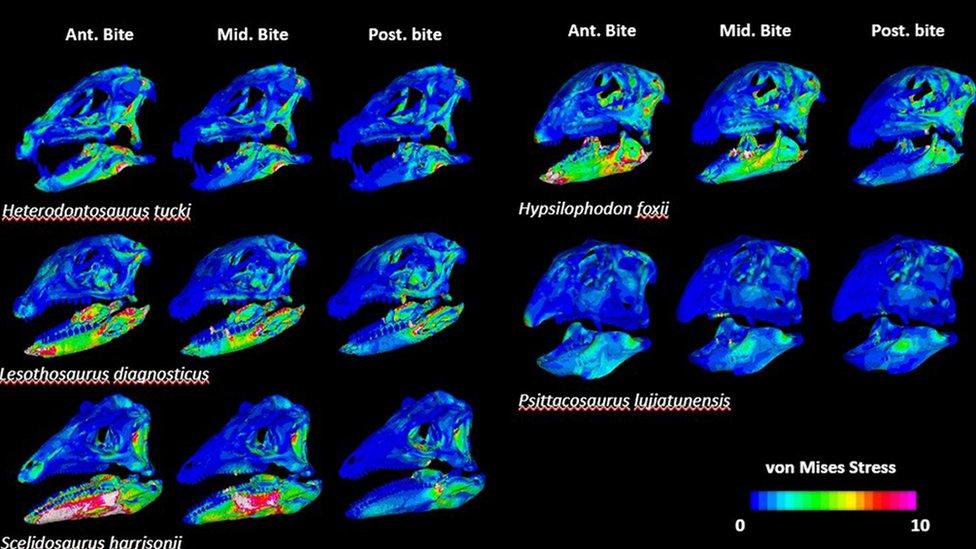
Researchers said they hoped their findings would shed further light on how dinosaurs evolved to occupy certain ecological niches
Plant-eating dinosaurs might have evolved different ways of eating their food, researchers say.
While analysing skulls of the first known herbivorous dinosaurs, scientists found they had variations in eating styles despite similar diets.
The lead author, Dr David Button from Bristol University, said it was due to "having different jaw muscles and biting actions".
Researchers said it showed "how innovative" evolution could be.
Dr David Button, who carried the work out at the Natural History Museum in London, said when they compared the functional performance of the skull and teeth, "they found significant differences in the relative sizes of the jaw muscles, bite forces and jaw strength between them".
He added: "This showed that these dinosaurs, although looking somewhat similar, had evolved very different ways to tackle a diet of plants."
'Reconstructing jaw muscles'
Published in the journal Current Biology, researchers said their findings could help shed further light on how dinosaurs evolved to occupy certain ecological niches, also highlighting how unpredictable evolution could be.
For the study, the researchers reconstructed jaw muscles of the Heterodontosaurus, Lesothosaurus, Scelidosaurus, Hypsilophodon and Psittacosaurus.
They then simulated biting action to analyse the forces exerted by the reconstructed muscles.
The five dinosaur species belong to a group of herbivorous creatures known as Ornithischia, that according to experts, were the earliest representatives of what would become the major plant-eating dinosaur groups.
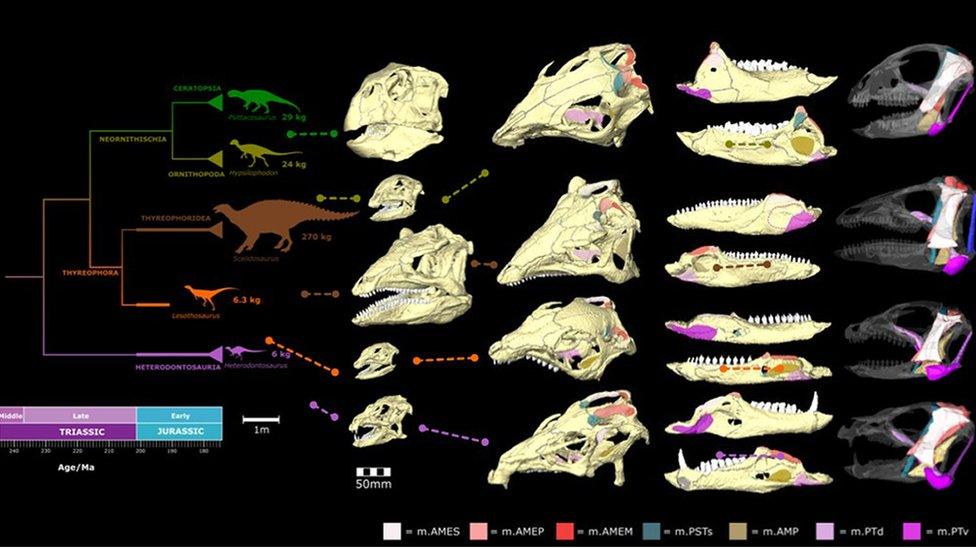
For the study, the researchers reconstructed jaw muscles of the Heterodontosaurus, Lesothosaurus, Scelidosaurus, Hypsilophodon and Psittacosaurus
The team found that Heterodontosaurus had large jaw muscles relative to its skull size, thus producing a high bite force ideal for consuming tough vegetation.
Scelidosaurus, on the other hand, had relatively small jaw muscles compared with its skull but had a similar bite force - due to its greater overall body size.
Senior author Professor Paul Barrett, a palaeontologist at the Natural History Museum, said in order to understand "how dinosaurs diversified into so many different types" effectively, it was "critical to learn" how dinosaurs "evolved to feed on such a wide variety of vegetation in so many different ways".
While all dinosaurs are thought to have descended from a single carnivorous ancestor, most of them evolved to become plant eaters.

Follow BBC West on Facebook, external, Twitter, external and Instagram, external. Send your story ideas to: bristol@bbc.co.uk
- Published26 October 2022
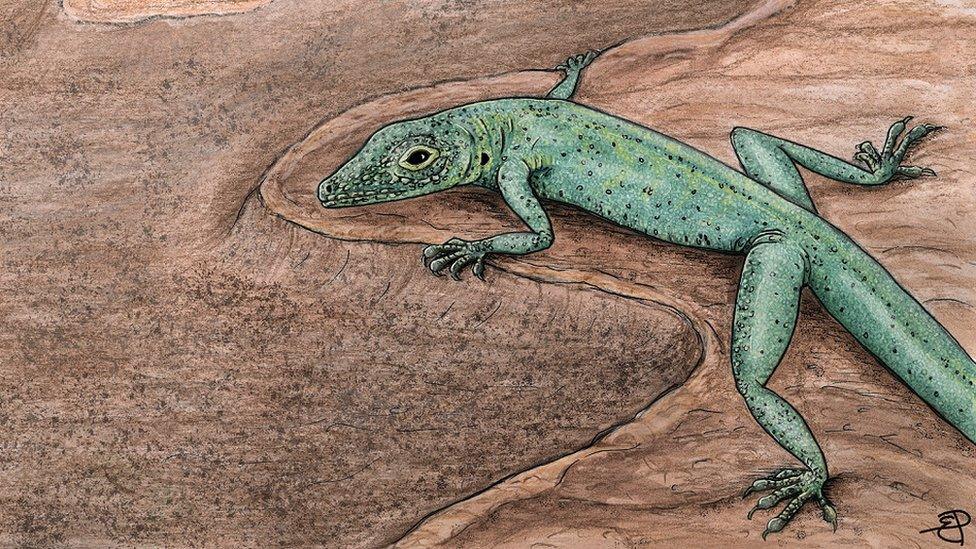
- Published1 September 2022
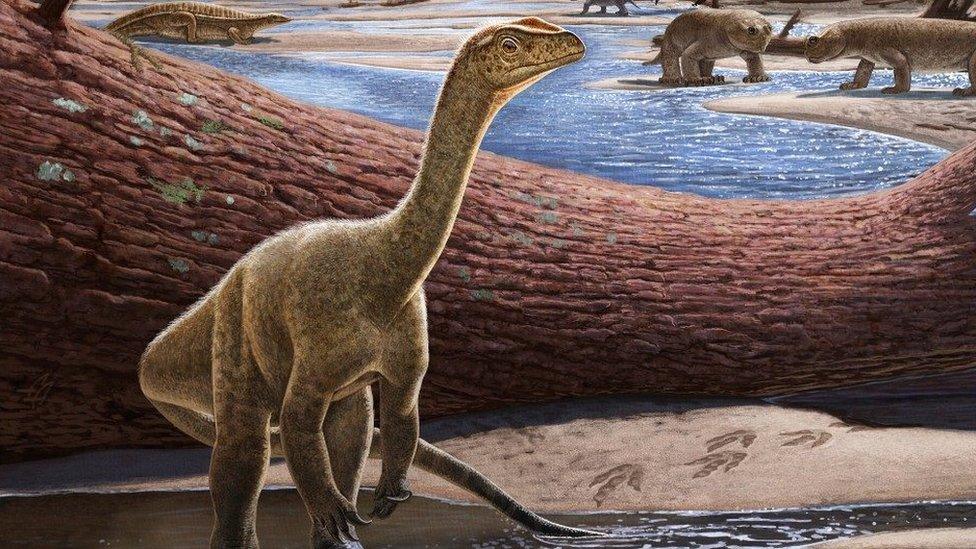
- Published26 August 2022
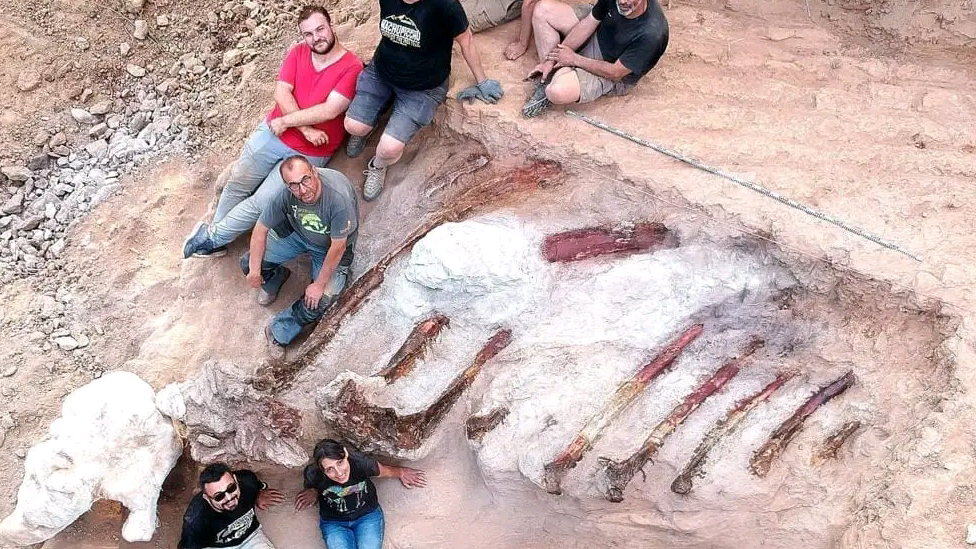
- Published8 July 2022
